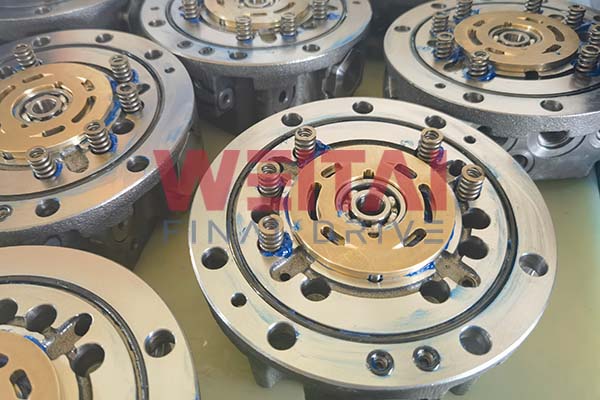Final drive motors are crucial for the mobility and performance of heavy machinery, such as excavators and bulldozers. When issues arise, timely diagnosis is essential to minimize downtime and repair costs. In this blog post, we’ll provide a step-by-step guide to diagnosing common problems with final drive motors, helping you identify issues and take appropriate action.

Step 1: Observe Symptoms
The first step in diagnosing any issue is to observe the symptoms. Pay attention to how the machinery behaves and listen for any unusual sounds.
Common Symptoms to Watch For
- Unusual Noises: Grinding, whining, or clunking sounds can indicate internal wear or damage.
- Leaking Fluid: Noticeable fluid leaks around the final drive motor can signal seal failure or other issues.
- Reduced Performance: Sluggish movement or difficulty in turning may suggest power delivery problems.
Step 2: Visual Inspection
Perform a thorough visual inspection of the final drive motor and surrounding components. Look for any signs of damage or wear.
Inspection Checklist
- Check for Leaks: Look for hydraulic fluid leaks at seals and connections.
- Examine Hoses and Fittings: Ensure all hoses are intact and securely connected.
- Inspect for Cracks: Look for cracks in the motor housing or mounting brackets that could indicate stress or damage.
Step 3: Assess Hydraulic Fluid Condition
Hydraulic fluid plays a crucial role in the operation of final drive motors. Assessing its condition can provide valuable insights into potential issues.
Fluid Assessment Tips
- Check Fluid Levels: Ensure the hydraulic fluid is at the recommended level. Low levels can lead to overheating and reduced performance.
- Inspect Fluid Quality: Examine the fluid for contaminants, discoloration, or a burnt smell, which can indicate overheating or contamination.
Step 4: Test for Pressure Issues
Low or fluctuating hydraulic pressure can significantly affect the performance of the final drive motor. Testing the pressure can help identify underlying problems.
Testing Procedure
- Use a Pressure Gauge: Connect a pressure gauge to the hydraulic system and monitor pressure readings while the machine is in operation.
- Compare to Specifications: Check the readings against the manufacturer’s specifications. Low pressure may indicate a pump issue or a leak in the system.
Step 5: Evaluate Control Systems
Final drive motors often rely on electronic control systems for operation. Issues with these systems can lead to performance problems.
Control System Check
- Inspect Wiring and Connections: Look for damaged wires or loose connections that could affect communication with the control system.
- Check for Error Codes: If your equipment has a diagnostic system, check for any error codes that might indicate specific issues with the final drive motor.
Step 6: Listen to Operator Feedback
Operators often have valuable insights into the performance of machinery. Gather feedback from the operators regarding any changes or issues they’ve noticed.
Key Questions to Ask
- When did the issue start?
- What specific symptoms have you observed?
- Has there been any recent maintenance or changes to the equipment?
Step 7: Conduct a Functional Test
After gathering information and performing inspections, conduct a functional test of the final drive motor to evaluate its performance.
Functional Testing Steps
- Operate the Machinery: Engage the final drive motor and observe its performance during operation.
- Assess Response: Pay attention to how quickly the motor responds to control inputs and whether it maintains consistent speed and torque.
Step 8: Consult the Manual and Manufacturer Support
If issues persist, consult the equipment manual for troubleshooting guidelines specific to your final drive motor. Manufacturer support can also provide valuable insights and recommendations.
Conclusion: Timely Diagnosis is Key
Diagnosing final drive motor issues requires a systematic approach, combining observation, inspection, and testing. By following these steps, you can identify potential problems early, ensuring your machinery remains operational and efficient.
Regular maintenance and prompt diagnosis of issues not only extend the life of your final drive motor but also enhance the overall performance of your equipment. When in doubt, don’t hesitate to consult professionals who can provide expert assistance in diagnosing and resolving complex issues.
Post time: Sep-24-2024
